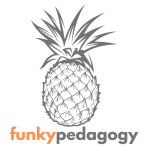When we were initially trained on vocabulary teaching by Jane Dallas, she separated words out into three classes.
1. Everyday words you need to communicate simple things (mum, dad, tree…)
2. More complex words used to add meaning or nuance (disgusting, harrowing, protective…)
3. Technical vocabulary linked to specific subjects (onomatopoeia, synthesis, semiquaver…)
Jane’s training, mainly centred around primary students, focused on developing students’ use of class 2 words. While the class 2 words are very important, it became very clear to my colleagues, particularly those in maths and science, that for secondary teaching, most of our key vocabulary is made up of words from class 3. I have, therefore, been working over the last half term, on a range of strategies for teaching class 3 words. My y11 top set group have been preparing for their Spoken Language controlled assessment. Any English teachers out there will acknowledge that this is about as close to anything scientific we ever come! It is basically a linguistic study, involving students being able to identify and describe features of spoken language. There is a plethora of complex technical terminology to go with this study, most of which are completely alien to students.
Some of the terms I needed my students to know this term have been:
Dialect
Accent
Idiolect
Paralinguistic features
Elision
Contraction
Non-fluency features
Phatic talk
Back-channel
Transcript
Prosodic features
Here are some of the strategies I’ve used with a very able group of Y11 students over the past 5 weeks…
1. Word origins
It often surprises me how fascinated students are by the meaning and provenance of words. I start with the meaning of students’ names (very easy to find online), and we talk about countries of origin and how names have changed, e.g. ‘Robert’ comes from the Anglo-Saxon Hreodbeort (hreod: fame, beort: bright).
Talking about names can lead into a discussion about how words change, and how roots (smaller chunks which make up words) can be traced across other words. When I introduced some of have new key words for this unit, I broke them down in order to show the meaning of the roots…
Paralinguistic: Para – beside or next to, lingua – language
So paralinguistics, related to anything which is non-verbal language, is beside, or related to language and communication.
This discussion can then be enhanced by…
2. Metacognition
Once students understand that words are made up of roots, and they are linked to other words (transport, transplant, transpose…), we can use metacognition to ensure that they continue to apply this understanding when they encounter new words. I used the metacognitive sentence starters below to get students to plan to apply their skills next time.
One student wrote: “Next time I encounter a new, unfamiliar word, I will break it down into chunks and see if I recognise the roots from any other words. This way I might be able to guess the meaning. I could use this skill in other subjects, such as science, where there are a lot of related words, such as ‘condensate, condensing and condensation.’
3. Word Webs
Get students to explore the roots of words and how words are connected to each other, by creating their own word webs around key words.
This could easily be enhanced with further annotations with the meanings of different roots, and some sentences putting the words into context.
4. Repetition, emphasis and modelling
I have consistently used these words whenever speaking to the students, and rewarded them for using them, both in conversation, and in their writing. Every time they use a piece of key terminology in their writing, I highlight it in green, and this forms a key part of the success criteria.
When students peer assess, they are looking for key vocabulary (among other things), and their targets for one another must always include something related to terminology.
We also begin all our annotation with identifying elements of terminology, so that students are always linking evidence with key vocabulary.
In all of my modelling for students, I use terminology, and highlight it in green – students copy this into their books, and highlight or label vocabulary too.
This may all seem a little over the top, and every now and then, one of my students says, “but I know it, I don’t need to highlight it anymore”. My answer is always the same – the more explicitly we use the terminology, the more it will be embedded into our every day language use.
The results so far…
When students sat a practise essay, based on a different transcript to the one for their CA, they scored very highly – this was partly due to their focus and hard work, but also because of the wide range of features they felt able to discuss. It was quite obvious that they were comfortable with the terminology, and this meant that their writing was succinct and sophisticated. They covered a lot of spoken language features, and wrote with confidence and clarity. I am convinced that the work we did on vocabulary made the difference.
Next steps…
I want to try the same strategies with a different type of group. I am going to train a low ability Y10 class in using analytical vocabulary to support their literature CA. It will be interesting to see how I need to adapt these strategies for this group of students.
I would love to hear your thoughts or suggestions! @funkypedagogy


